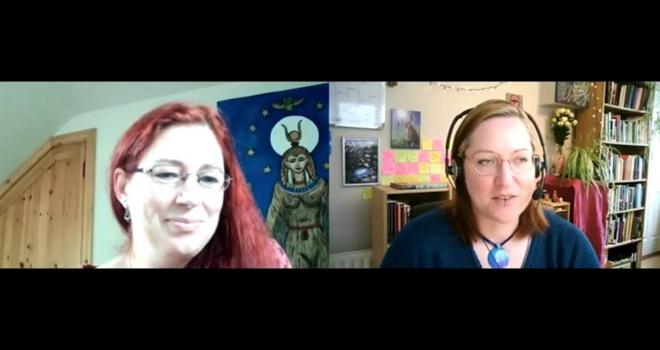This is just a quick re-share of a fantastic video by Irish Priestesses Sophia Boann & Lora O’Brien on the problem with the terms ‘Abrahamic’ and ‘Judeo-Christian’. By the way, O’Brien is running an online course called Decolonising Your Druidry & Spiritual Practice: The roots of Druidic Religion & how to ensure your modern practice is authentic and respectful. From what I’ve seen so far, this is fantastic and critical information for many Pagans and Witches and I’m looking forward to learning more.
I’ll admit I’m totally guilty of using the term ‘Abrahamic’ as a catch-all phrase for Judaism, Christianity, and Islam, and I’m nipping that in the bud right now.
One of the things I love about language is how it evolves and shifts over time. Words slip in and out of vogue. While I knew on a gut level that ‘Judeo-Christian’ was problematic, I’d become accustomed to seeing the term ‘Abrahamic’ in occult spaces, and found myself using it without much critical thinking. I’m really grateful for Pagans, Witches, and Occultists who share knowledge when critical thinking is really needed.
I also love the fact that there’s no ‘deadline’ for learning and changing. It’s not like you turn 25 or 45 or 75 and suddenly have all the ‘correct answers’. The more we share and learn, the more expansive the world becomes. Sure, it gets complicated — but that’s only until we expand that world enough to see larger connections and endemic problems, so we can face those head-on.
Anyway, here’s that video:
This video reminded me that I have misgivings about the term ‘Solomonic’ as a catch-all phrase for European magical texts, but I’m not clear where or why that is and I really need to unpack that. These texts are hardly a uniform monolith (many don’t even mention King Solomon, but appropriate ideas and passages from early texts that do). Yet I find many contemporary practitioners tend to approach them as a general literary category (and I’m guilty of this too). We could parse them, but that’s not how they’re used in a contemporary context, and since not all are Solomonic, not all are even grimoires, and ‘late medieval to early modern magical texts’ is kind of a mouthful — I feel a little stuck. Plus, some weren’t necessarily intended as magical texts at all (looking at you, Reginold Scot). So how do we refer to these works when we, well, are bold-faced adapting them into contemporary practices?
Language is important — as many of these same texts point out.

